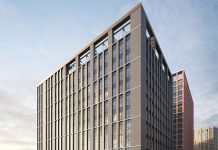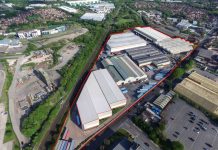Independent commercial building consultancy, Malcolm Hollis, has launched a workspace consultancy service to provide a digitally focussed and fully integrated workplace solution to corporate occupiers, landlords and developers.
The workspace consultancy team will provide clients with new or refurbished workspaces that reflect and enhance their corporate identity and values, as well as boost the productivity and wellbeing of building users. Whether it be an office building, a logistics centre or retail park the focus is on value optimisation rather than cost reduction.
Services such as transformative technology consultancy, strategic occupancy planning, interior design, change management, development monitoring, mechanical and electrical engineering, energy and sustainability, space planning and measurement, provide building owners and occupiers with an integrated and seamless solution for the full lifecycle of the asset.
Malcolm Hollis can provide different levels of the service: from managing certain aspects of the process, such as furniture selection and tendering or biophilic design, to an all-encompassing management role, responsible for the overall delivery of design, costing, procurement and construction monitoring phases.
Edward Pittar, head of Workspace Consultancy at Malcolm Hollis, said: “This new service will help our clients to generate workplaces of choice, to attract and retain the best talent, and ensure the asset is futureproofed to be more compatible with new work styles.
“We believe we are well placed to guide clients through the latest trends in workspace design and build, as well as technology, wellbeing and sustainability practises, that will enable clients to lead from the front when it comes to producing spaces that people want to work in and visit.
“We can also help clients to identify areas that are under performing, and working with asset managers, can reposition those in ways that can add greater value to the occupied areas, ultimately leading to higher rents and increase building value.”




















